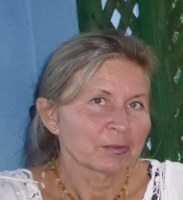The Norwegian University of Science and Technology (NTNU) is Norway’s largest University, with nine faculties and 55 departments, and about 40 000 students and 7 100 employees. NTNU is the primary institution for education in technology and the natural sciences in Norway, and has four strategic areas of research: Sustainability, Energy, Oceans, and Health. NTNU’s social mission is to create knowledge for a better world and deliver solutions that can change and improve everyday life. NTNU has a broad range of contracts with industry and R&D organisations, and hosts about 3 450 international students annually. About 370 PhD-degrees are awarded yearly. NTNU participates in more than 120 EU projects under Horizon2020. NTNU’s Faculty of Medicine and Health Sciences (MH) has about 1 800 employees, many of them in combined academic-clinical positions, and about 6 500 bachelor and master students within medicine and various health sciences. MH’s social mission is to create knowledge for better health. MH is host faculty for NTNU’s strategic research area Health, with the main objective to stimulate cross-disciplinary and innovative solutions for future health challenges. MH’s own research priorities are Innovation, Global Health, and Health Technology. The faculty is co-located with St. Olav University Hospital with an integrated practice, which provides convenient access to patients and locations for running clinical research studies. The Department of Neuromedicine and Movement Science is one of MH faculty’s eight departments and covers a wide range of research and educational areas related to movement disorders, stroke and geriatrics, orthopaedics, rheumatology, neurology and neuroscience, physical medicine and rehabilitation, physiotherapy, occupational therapy, and audiology. The department’s research group on Geriatrics, Movement and Stroke is highly cross-disciplinary and runs several large clinical trials as well as a broad range of mechanism studies regarding movement control and movement disorders, prevention of functional decline and falls at older age, and geriatric and stroke treatment and rehabilitation. The group has a particular focus on - and long-standing experience with - the use of laboratory-based and wearable technology to monitor and enhance movement behaviour. The group is responsible for several wellequipped movement laboratories, has access to usability laboratories, and has highly competent staff with extensive basic and clinical competence regarding balance and gait assessment, monitoring of physical activity and movement control by use of body worn sensors, advanced time series analysis and data modelling. Based on evidence about falls prevention, the group has developed a model for implementing and spreading group exercise classes for prevention of functional decline and falls on a national basis. The work is done in collaboration with the National Directorate of Health, and currently, more than 300 exercise trainers have been educated, and more than 3000 people participate in the exercise programme. The research group has participated in several EU studies: ProFANE (thematic network for falls prevention, FP5), FARSEEING (R&D project on falls monitoring and preventive interventions, FP7), ProFouND (thematic network on fall prevention dissemination, FP7), and is currently coordinating PreventIT (RIA project on prevention of functional decline at old age by use of mobile health technology, H2020) and WP lead for MOBILISE-D (an IMI2 project on digital mobility assessment). The research group is also holder of NTNU’s Gold Card in Health Technology, awarded to research groups that are particularly well positioned to successfully acquire EU funding.

JORUNN L.HELBOSTAD
Professor in Medicine/Human Movement Science; PT, PhD in Physiotherapy Science; Head of Department of Neuromedicine and Movement Science; establishment of a regional competence centre for movement disorders and falls in the elderly; project management group for the Trondheim hip-fracture trial and the Evahip trial; chair of ISPGR (2012); been in the steering group for implementating preventive exercise groups at a national level; expertise in movement disorders and falls in older persons, gait assessment, activity monitoring and exercise interventions, fall risk assessment and prevention, and development and implementation of health technology.

ANN-KATRIN STENSDOTTER
Professor in Medicine/Physiotherapy at the Department of Neuromedicine and Movement Science. She has been with the physiotherapy program since 1997 and has a PhD from Umeå University, Sweden, where she is still affiliated. She was the originator of the interdisciplinary master program in Occupational and Movement Science (2011) which she managed until it was merged with two other master programs. Her areas of teaching are physiology and biomechanics, which she has taught for occupational- and physiotherapy in Trondheim and Umeå. She has originated courses on basic and advanced Kinesiology in sports science at Mid-Sweden University. Her research is in the area of motor control with main focus on physiological mechanisms explaining deficits or deviations in control and performance. Her PhD was on patellofemoral pain, and she has supervised PhD students on knee related conditions such as osteoarthritis and total prosthesis. She is collaborating the large KACL-20 study in Sweden. Several of her publications are on gait and postural control.